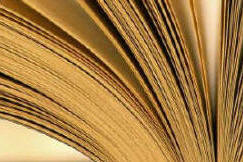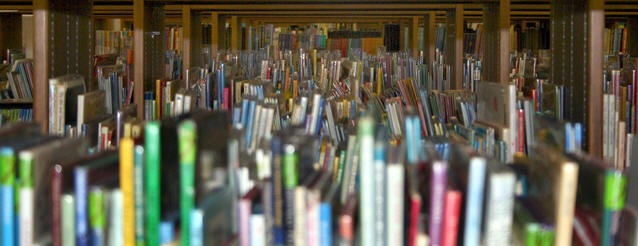 |
 |
 |
| |||||||
|
Volume 41, No. 2, December 2004 Story – Feature
Reading and Writing in Book-Scarce Environments: Performance Literacy Brett Dillingham Stories make us hungry for more words. Storytelling – performance literacy is a rich resource, particularly in print poor environments. Studies show that when children have more access to books, they read more, and when children read more they read better. Where can children of poverty find books? If they are lucky, they live near a good library- but most of these children don’t have that kind of luck. In addition their homes usually have few, if any, books. These children want to read. Their teachers spark the imaginations of students by reading them great books and stories. Yet when these children embark on their own print explorations, the paths are closed. They wish to know if a Siberian tiger can swim, why leaves fall from trees; to dream a fantasy tale from another country, learn about families other than their own, view photographs of supernovas or other galaxies. But the books aren’t there. How can we foster useful and motivating literacy experiences for children who live in these book-scarce environments? One way is to encourage performance literacy- children writing and telling their own stories. Start by telling children a story. Make the storytelling itself interesting by integrating facial expressions, sound (sound effects, rhythm, intonation) and body movement. By painting a story picture this way children “willingly suspend their disbelief”. They sit transfixed, creating pictures and events in their minds. Because their access to interesting, relevant print is limited, these children need to craft their own stories, not just the ones the teacher or storyteller performs. They need to be encouraged to write and tell their own stories. I present them with a subject that is culturally relevant to the students and community. The children brainstorm different problems and solutions (conflicts and resolutions) they can choose from. Once they have chosen and written their subject and problem/solution, I ask them to tell and re-tell their stories to each other in pairs. They do this before most have written the first draft of their story. This is important because so many children have a hard time putting the ideas in their heads onto paper in story format; however, if they have verbalized their ideas in story format the writing is much easier. When they have told their “draft” stories, they continue writing. The children are encouraged to draw a picture that helps them remember the story. They have written their own stories and read them many times. They can then tell their stories to an audience- their parents, a class next door, at a library or hospital, anywhere they can “publish” their work. The Storytelling/Reading Connection Reading is one component of literacy- speaking, listening, and writing are the others. These components are interrelated and support each other. For example, when children write, they are reading. When they read they see words they have heard in new sentence structures. They learn new vocabulary from reading. Once students have written and told their own stories, listened to their classmates tell their stories, and “published” their stories to other classes or audiences, they have immersed themselves in all aspects of literacy. They have written their own stories and read them many times. They have listened to their classmate’s stories and “re-told” them. Performing literacy provides the tools and motivation to write, read, tell and listen to more stories. Stories make us hungry for more words. It’s nice to know we can create stories of our own, even when we, sadly, lack access to good books. This article was commissioned by IBBY (International Board on Books for Young People) Ireland, 20 Victoria Road, Rathgar, Dublin 6 for inclusion in World Books, a guide to multicultural books for young people to be published in Autumn 2005. Permission granted by IBBY for reprinting in FRQ. Copies of Changing Faces, Changing Places, IBBY Ireland’s first guide to multicultural books are still available. See www.ibbyireland.ie for further details. Feature – Story Break! Sally and The Seaby Brett Dillingham Sally Gills was a romantic young woman with eyes that changed colors like the sea- sometimes blue, sometimes gray. She lived in a small fishing village in Southeast, Alaska. The land was rugged and enchanting, the weather mostly cloudy, with occasional bursts of sunshine when the sun shone through, or when the winds whisked the rain clouds away. Sally liked a boy named Irwin, and Irwin liked Sally. Irwin would come up to her as she sat on a rock, looking out over the sea with its waves dancing patterns, the sea gulls blowing about like balsa gliders, great bald eagles sitting still as statues in the tops of trees, huge ravens croaking and cawing, their voices hollow and haunting. Irwin would call her name, once, twice, then Sally would snap out of it. “Sally, why do you come out in the rain so much? Why do you always stare out at the sea? The village people whisper, they say you are strange. And you are! Why don’t you come into the village and watch a movie with me?” “I’d love to spend some time with you, Irwin, but not watching a movie, not in the village. Let’s watch the tide receding, see how the birds wheel in the grey sky, the ripples on the surface of the water! Isn’t it lovely?” Irwin would walk slowly back to village, sad that Sally didn’t come with him, wishing she would be like the rest of the village people and not gaze at the sea all day. One day, the tide was high and the sea splashed breaking waves and white foam. Sally walked on the slippery rocks, listening for the bark of seals, hoping to see a humpbacked whale fly its 40 ton body out of the water to come crashing down in a monstrous splash, when suddenly she slipped into the cold, turbulent sea. But for Sally, the sea wasn’t cold. It felt just right. She found could breathe, just like being on land. Her legs stuck together and formed a tail, her arms turned into flippers, and she swam in the blue waters. Out of the corner of her eye she saw a fish struggling. It was a huge, silvery fish, caught in a net a fisherman had lost. Sally swam over to it and released it from the plastic lines of the net. At first the silver salmon barely wriggled, just floated towards the bottom of the sea. Sally waved her fins and forced fresh water into its gills. The salmon quickly came back to life. “I owe you my life. My name is Kush-too. You look part land dweller and part fish.” “I guess I am. I’m new to the water. Where is your home?” “The sea is my home. Come, let me show it to you.” Kush-too showed Sally how to swim with the currents. He taught her how to leap from the water and sail in the air before splashing back to his watery home. They swam in the channels, through huge waves in the open sea, into still tide pools and through the skeletons of dark, haunting shipwrecks. They swam to a bed of kelp with long, greenish-brown tendrils that swayed gently in the currents. Kush-too danced to its rhythm in the kelp bed. Sally joined him, closing her eyes and letting her body sway back and forth. Nightfall came, and a full moon broke through the clouds, spreading a layer of silver over the entire sea. Together, they swam near its surface, sometimes looking out the water towards land, sometimes looking down into the depths of the sea, until morning came. “I must go back” Sally said. She swam towards land and her fins and tail turned into legs and arms. She walked from the sea into the village. She had strands of kelp in her hair. The village people avoided her. Irwin watched her from his window. She saw him standing there. They stared at each other. Then Irwin turned away into the dark of his room. Sally looked at the village. The people were not bad- but their life wasn’t hers. The movies, the cars, the houses and the clothes... they didn’t interest her. She turned and walked towards the sea. When she got to its edge, she kept walking. She disappeared into the water. Kush-too, the lovely silver salmon, was waiting. Her arms and legs turned into flippers. Her whole body was covered with scales. She was no longer a human. Sally was a fish. On those rare nights when the Southeast Alaskan sky isn’t covered with clouds and the moon is giant and silver, beaming its soft light towards Earth, Irwin walks down to the rocks by the edge of the sea. There he sits, staring into the water, until a pair of silver salmon leap from the still surface, then splash back. A tear falls from his eye, into the water where Sally has gone. Then Irwin goes home. Permission granted by the author for the reprinting of Sally by the Sea. |